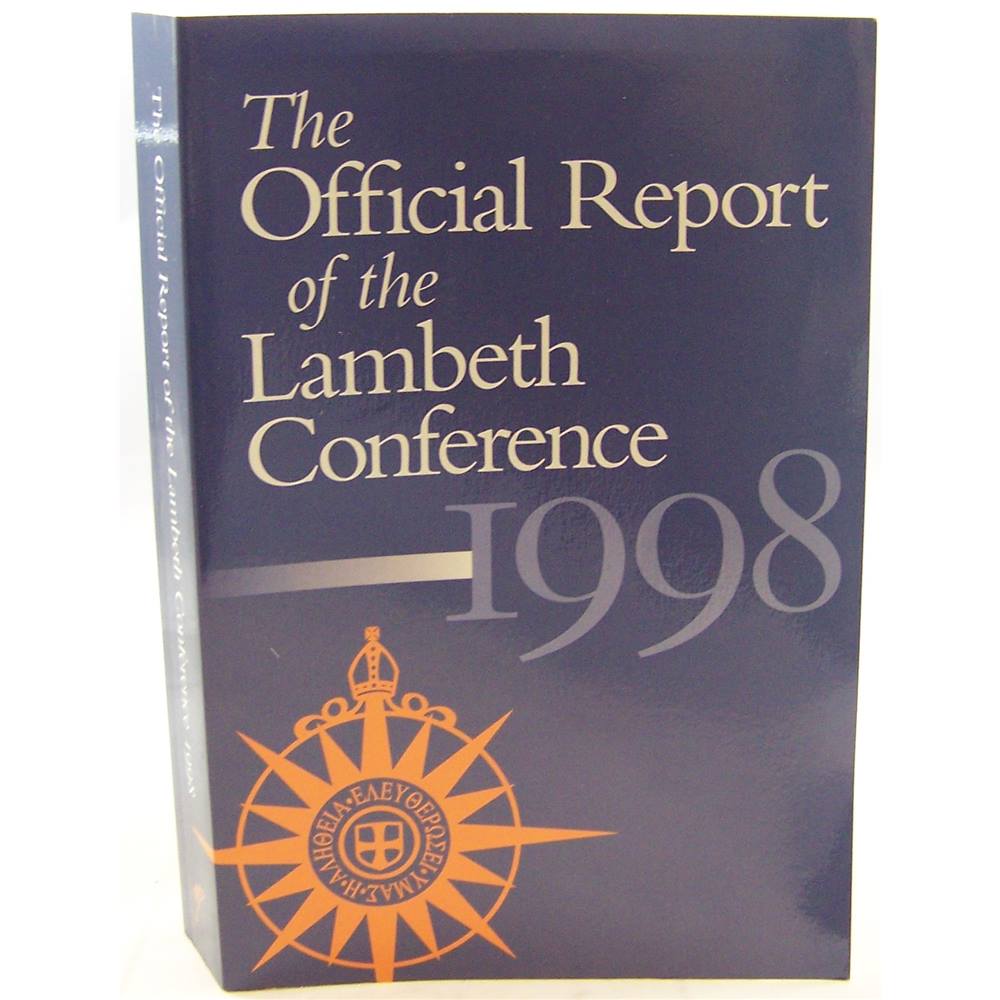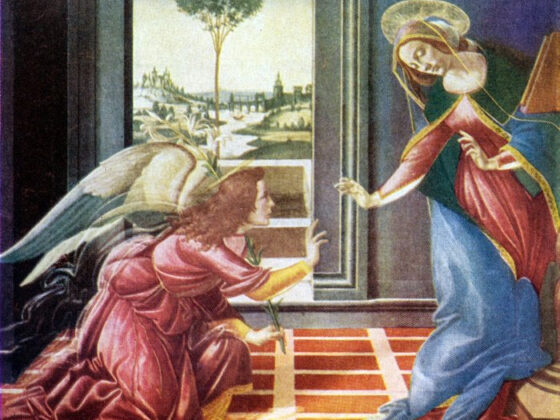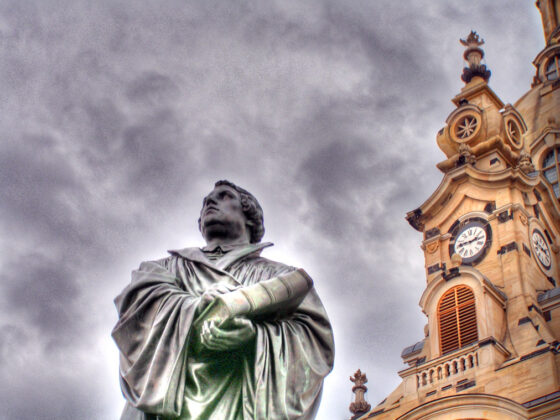The year 1998 was the last time the Lambeth Conference spoke plainly. That it did so was something of a miracle. The Communion Establishment had carefully prepared an agenda whereby the innovations of homosexual ordinations and same-sex “blessings” in the Episcopal Church would be received with “good disagreement” from those in the Global South who were, frankly, unaware of the “development” of doctrine and practice in the West. These plans were foiled by an alliance of Western conservatives who had seen where the sexuality agenda was leading and courageous Global South leaders who stood up and said No.
I was present at Lambeth 1998 and wrote this evaluation of its key Resolution I.10 shortly thereafter.
***
The Anglican Communion, in the providence of God, has been thrust into an identity crisis. At its inception, the Church of England was guided by the Bible, doctrine (Articles of Religion), discipline (Book of Common Prayer), and church order (Establishment). The planting and growth to independence of daughter churches throughout the world stretched but did not break this identity, as the Lambeth Quadrilateral, use of locally adapted Prayer Books, and decennial Lambeth Conferences built on the original foundation.
Anglicanism has had mixed success in coping the modernist critique of Christianity. Some have questioned the “integrity of Anglicanism,” especially in the Western Provinces (U.K. and North America). At the same time, vigorous evangelical Anglican provinces have emerged in the Provinces of “the South,” which now greatly outnumber the original churches. The differences between West and South came to a head at the Lambeth Conference of 1998. While the Conference retained much of the civility of the first Lambeth tea party, the issue of homosexuality ignited a kind of Boston Tea Party, with bishops from the South demanding the right to express their understanding of Biblical teaching on the subject.
The resulting Resolution (I.10) is striking for its theological clarity and pastoral charity, or so I argue below. Nevertheless the Resolution has evoked great hostility and non-compliance in the West.
WHAT THE ANGLICAN BISHOPS SAID ABOUT SEX
Lambeth Conference Resolution I.10, with Introduction and Commentary
Introduction: The Significance of the Vote on Human Sexuality
Everyone knew it. The media knew it. The bishops, liberal and conservative, from the West and from the Third World, knew it. The vote on homosexuality was to be the defining moment of the international Lambeth Conference of Anglican bishops. When the time for the debate on the “human sexuality” resolutions came, a sense of solemnity descended on the full assembly of 700 bishops on the afternoon of August 6, 1998.
Shortly before he raised his hand in favor of Resolution I.10 on Human Sexuality, Archbishop George Carey said he hoped Lambeth 1998 would not be remembered only for sex. Perhaps his wish will be partially fulfilled: the Conference did indeed pass a number of significant resolutions – on mission, on euthanasia, on international debt. But only partially, because homosexuality was the presenting symptom of an identity crisis that had to be dealt with in order for the Anglican Communion to speak with credibility on these other issues and prepare itself to present the Gospel in the next century.
The deeper question facing the Communion was whether Anglicans hold certain truths to be fundamental. To do so is not fundamentalism but the Anglican “middle way” (via media): “In essentials, unity; in non-essentials, liberty; in all things, charity.” The norm of sex only in marriage is one of those essential truths. An earlier Lambeth Conference, addressing the sexual revolution of Sigmund Freud, had not flinched from stating an unequivocal position:
Recognizing that to live a pure and chaste life before and after marriage is, for both sexes, the unchangeable Christian standard, attainable and attained through the help of the Holy Spirit by men and women of every age, the Conference desires to proclaim the universal obligation of this standard, and its vital importance as an essential condition of human happiness. (Lambeth 1920, Resolution 66)
If Lambeth 1920 was correct that marriage is the exclusive and unchangeable Christian standard, then those who repudiate this standard do not stand in the middle way but are outside the bounds of historic Christian (and Anglican) teaching. The question facing the bishops in 1998 was whether the historic standard was changeable. And if this teaching were changeable, what other unchangeable doctrines could be revised by some region or church of the Communion?
The sexuality issue forced the bishops to ask an even deeper question: by what authority does the Church determine what is essential truth and what is not? The answer given in the past has been clear: the Bible is our primary authority in matters of faith and morals. The Anglican Communion can condone or endorse a sexual practice that is forbidden in both Old and New Testaments only by changing its historic foundation.
On August 6, the bishops at Lambeth answered the question by passing a strong, clear statement on human sexuality by a majority of 526 to 70, with 45 abstaining. By this act, they restated the historic teaching of the Christian Church and reaffirmed the foundation of that teaching in the revealed will of God in Holy Scripture.
The Times of London called the resolution a “surprisingly trenchant verdict.” The resolution is unusually free of the jargon found in many official church statements that can be “spun” in various directions. Resolution 1.10 has been universally understood as a reaffirmation of the Church’s traditional teaching. Only those who refuse to read it as a whole can find it “paradoxical,” as Presiding Bishop Frank Griswold has characterized it. It invites the kind of conversation that begins with a moral compass: that God created human nature with the aim that the two sexes should become one flesh in exclusive and lifelong marriage.
The Lambeth Conference had its defining moment when it passed Resolution 1.10, spelling out the biblical, historic, and normative teaching of the Church. Now we in the Episcopal Church face our defining moment, whether to embrace this teaching or to spurn it.
Resolution I.10: Human Sexuality
This Conference
commends to the Church the subsection report on human sexuality;
Resolution I.10 was accompanied by a report from a group (“subsection”) of bishops who met during the first two weeks of the Conference. The subsection on human sexuality was the most volatile and publicized group at Lambeth, reflecting the deep divisions on homosexuality that exist between some Western bishops and the Third World bishops (Bishop Spong, for instance, was in this subsection). Hence the subsection report, unlike the Resolution 1.10, reads at times like an opinion poll [N.B. now known as “indaba”]. Nevertheless, when all was said and done, the subsection presented the Conference with the resolution that was finally passed (with clarifying amendments). Significantly, the subsection did not issue a minority report.
The subsection reaffirmed Lambeth 1920’s “unchangeable Christian standard” of sexual morality by rejecting a preliminary proposal to see some non-marital relationships, including homosexual partnerships and polygamous marriages, as faithful to God’s will. The subsection report commends only two ways of sexual faithfulness: marriage and chastity. (Because a few bishops sought to define “chastity” as allowing homosexual relationships, the Conference made its meaning absolutely clear by changing “chastity” to “abstinence” in the final resolution.)
in view of the teaching of Scripture, upholds faithfulness in marriage between a man and a woman in lifelong union, and believes that abstinence is right for those who are not called to marriage;
Here the bishops state their key moral premise that homosexuality is to be judged on the basis of God’s design for marriage. By speaking of a “call” to marriage, the resolution raises holy matrimony above its biological and civic purposes to signify the “mystery of Christ and his Church.” At the same time, the resolution holds both marriage and abstinence to be genuine ways of following Jesus. Because marriage is so honored by God, abstinence gains equal honor as self-denial for the sake of Christ and his kingdom. The call to abstinence may or may not be lifelong, but in a special way it too serves as a sign – of single-minded devotion to the Master.
The moral premise is made in view of the teaching of Scripture. The Conference intends to make clear that moral norms are based on biblical authority. Scripture comes first. In a separate Resolution (III.1) the Conference “reaffirms the primary authority of the Scriptures, according to their testimony and supported by our own historic formularies.” Two of these historic formularies are relevant here: Article XX of the Thirty-Nine Articles declares that “it is not lawful for the Church to ordain anything that is contrary to God’s Word written.” The Lambeth Quadrilateral, adopted by the Lambeth Conference in 1888 as the basis of Christian unity, holds that the Bible is “the rule and standard of faith.”
The resolution is not treating the Bible merely as a rule book. The Bible tells the Great Story of God’s salvation in Jesus Christ. But a story without rules is like a house without foundation and beams. God our Father teaches his children, saying “this way and not that way.” He does this for our good. With Lambeth 1920, the bishops are saying that the reason we must accept the marital standard is “its vital importance as an essential condition of human happiness.”
recognises that there are among us persons who experience themselves as having a homosexual orientation. Many of these are members of the Church and are seeking the pastoral care, moral direction of the Church, and God’s transforming power for the living of their lives and the ordering of relationships. We commit ourselves to listen to the experience of homosexual persons and we wish to assure them that they are loved by God and that all baptised, believing and faithful persons, regardless of sexual orientation, are full members of the Body of Christ.
This phrase carefully defines homosexuality as a matter of self-image. It asserts neither that all homosexuals have chosen to be that way nor that they are born that way. By so defining “orientation,” the Resolution acknowledges the psychological and social dynamics of homosexuality without thereby accepting them as right or inevitable and unchangeable. Clearly some think of themselves as homosexuals and have built their lives around this understanding. The Church’s pastoral ministry must take this reality seriously.
The resolution makes clear that homosexual inclinations or orientation are not incompatible with membership in the Church. All Christians without distinction are offspring of God by creation and sons of God by adoption and grace (Acts 17:28; Galatians 4:4-8). The resolution goes on to suggest that “homosexual persons” may be led to the Church out of their experience, as are all others who know their need for God. But because Christians are to not come to the Church “for solace only, and not for strength; for pardon only and not for renewal,” the resolution couples the Church’s welcome to all with the challenge of spiritual transformation (Romans 12:1-2). A pastoral vision for “homosexual persons” might include reorientation to a heterosexual self-image or the building of chaste friendships with people of the same or opposite sex.
In light of the biblical moral norms, this clause challenges the Church to help those who think of themselves as homosexual to frame their self-understanding in terms set by the Gospel. The call to listen to the experience of homosexual persons was added by amendment and accepted by the majority of bishops in the context of the whole resolution. They recognize that homosexual orientation is psychologically complex and socially constructed in such a way that the Church must consider carefully how to bring the health of the Gospel to people so oriented. While pastors are urged to listen patiently to those who think of themselves as homosexual, their call is to bring such persons to understand themselves simply as disciples of Jesus, committed to him and to his standards of holiness.
while rejecting homosexual practice as incompatible with Scripture, calls on all our people to minister pastorally and sensitively to all irrespective of sexual orientation and to condemn irrational fear of homosexuals, violence within marriage and any trivialisation and commercialisation of sex;
This clause, like the whole resolution, balances moral principle and pastoral exhortation. Third World bishops insisted on including the words rejecting homosexual practice as incompatible with Scripture in order to make clear that pastoral sensitivity must include the call to repentance and discipline. Their amendment, which carried by a vote of 390 to 180, encapsulates the conviction of many bishops that the authority of Scripture undergirds Anglican teaching and identity. These words declare the norm to be absolute and unchangeable and close the door on any “discontinuous” alternatives, such as “same-sex unions.”
The bishops are speaking the truth in love in the current context of the “sexual revolution” in the West. They are calling on the Church to be leaven in the midst of a culture that has replaced love of God with various substitutes. It is therefore appropriate that they mention other manifestations of disorder in society such as bigotry, violence, and pornography. Third World bishops proposed and passed an amendment of the original resolution, changing the word “homophobia” to the “irrational fear of homosexuality.” Thus the resolution states clearly that hatred and prejudice against homosexuals is not godly, but it rejects the political use of “homophobia” to depict opponents of the gay-rights movement as driven by dark inner fears and hatred.
cannot advise the legitimising or blessing of same sex unions nor ordaining those involved in same gender unions.
This clause is a pointed challenge from the Anglican Communion to the Episcopal Church to adhere to the biblical and historic teaching on sexuality. The word “advise” acknowledges the fact that the Lambeth Conference cannot force member churches to conform, but the resolution was clearly intended to be heeded and responded to. The regional resolution from Central and East Africa was quite blunt at this point: “Those persons who practise homosexuality and live in promiscuity, as well as those Bishops who knowingly ordain them or encourage these practices, act contrary to the Scriptures and the teaching of the Church. We call upon them to repent.”
requests the Primates and the ACC [Anglican Consultative Council] to establish a means of monitoring the work done on the subject of human sexuality in the Communion and to share statements and resources among us.
The bishops of the Communion are highly critical of the unilateral actions of Episcopal bishops in permitting the ordination of practicing homosexuals and performance of same-sex “blessings.” They believe these actions, by rejecting historic Christian teaching, have threatened the unity of the Communion as well as ecumenical relationships with the worldwide Christian fellowship. They intend to give their Western colleagues time to rethink their position, but they expect the leaders of the Episcopal Church to answer to the formulation of Anglican teaching in this resolution. Ultimately, they are calling for conformity. Hence the monitoring process by the Primates (i.e., the archbishops) and the Anglican Consultative Council, which are the oversight bodies between Lambeth Conferences.
notes the significance of the Kuala Lumpur Statement on Human Sexuality and the concerns expressed in resolutions IV.26, V.1, V.10, V.23 and V.35 on the authority of Scripture in matters of marriage and sexuality and asks the Primates and the ACC to include them in their monitoring process.
There were five substantive resolutions on the floor at Lambeth in addition to Resolution I.10, all of them from the Third World churches and all of them reaffirming the historic teaching of the Church. Some bishops wanted to pass them all, but by way of compromise they accepted this clause as making clear the harmony among the resolutions. Conversely, there is no minority resolution that differs from the normative teaching found in all these resolutions. Thus while individual bishops voted against the resolution, the official position of the Anglican Communion is a clear and unequivocal reaffirmation of the biblical teaching.





